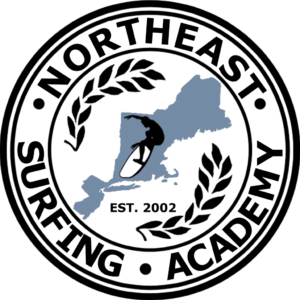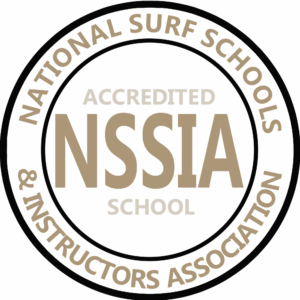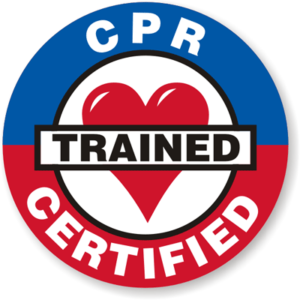
How to Surf Tips
Surf Education > How to Surf >
How to Surf Waves –
Duck Diving: You may be wondering what duck-diving actually is. Any breaking wave over approximately two feet requires that you duck under the wave rather than float over it. Thus, the term “duck-dive!” Honestly, duck-diving wasn’t something I learned until I had surfed for a couple of months. Yet for sake of chronology, let’s discuss this skill before we learn to stand up As you approach an oncoming wave while paddling, try to have as much speed as possible. About two feet before making contact with the white water, grab both rails (side edges of board) halfway between the nose and midpoint of your board. Push all your upper body weight onto your hands and arms until you feel the nose begin to go under. Point your head down and let your body follow. Once your body is just below the surface, bend your dominant leg and use that knee to push the tail under the water also. Your momentum should thrust you under the quickly passing wave and only require you to be under water for a short time. As the wave passes let the flotation of your board lift you to the surface. Now you have the skill to paddle to the lineup or to the next wave and duck under it.
Turtle Rolling Under Wave: Once known as the Eskimo Roll or turning turtle, this is a mystic way of taking your board through the waves. It’s also good to know just for recovery purposes. Grab both rails just forward of the thickest part of the board. By twisting you’re your body sharply to either side to roll the board beneath the surface, holding the board with its deck facing down. Now roll back upright, twisting your body once again as if you were swimming. If you can’t manage the roll-upright first time, just swing yourself out from under the board, flip it over and remount. The Eskimo Roll, or turning turtle is a big deal on longboards, but on shortboards it has been superseded. You will have been able to tell exactly why it has been superseded from the first moment you spent upside down beneath your surfboard with water forcing itself up your nose. A hint: before rolling, take a deep breath. While under, expel the breath slowly through the nose, keeping the old sinus cavity as clear of salt as possible. Simple.
Catching A Wave: Now that you’ve paddled out and ducked under the breaking waves, it’s time to get yourself one. Again, be sure you are picking a small, mushy surf spot to get your initial experience. Once you’ve made it to the lineup, sit up and straddle your board with your butt situated just below the center-point of your board, so that you can easily swing the nose left or right. Pick a wave that has not broken and be sure to sit far enough out among the sloping swells, not where the waves are standing up straight. As a wave approaches, turn the nose of your board toward the beach, lay down and begin paddling. As you feel the wave lift you and your board, paddle as hard as you can and lean your weight forward. The natural tendency is to lean back to keep the nose from going under water, but that will only slow your momentum which in not conducive to wave-catching. Lean forward but raise your chest so that your weight is just above the center of the board. You should now be sliding down into the the trough of the wave. The first phase of surfing will entail that you wait until you are in the flat water in front of the wave before you stand up. However, the ideal is to begin standing just as you feel the pull of the wave. Now you are ready to work on standing. Stay away from standing on the inside, and catching white water, then attempting to standup. This will not work, and is a waste of energy. Read this area over an over again, and if you follow it you will have a better understanding of surfing, it is that understanding that will allow you to surf waves.
Note: Make sure that you are not to far back on your surfboard, you have the right board for the right waves, and while learning stay out of the way of other surfers. When catching a wave you want to learn forward a bit using your weight to help you get into the wave. Sit just outside the break, and paddle into the round wave with a little head wall just as it begins to get steep, just before it breaks not after it breaks. A breaking wave with lose holding power making it harder to stand on your surfboard.
Choosing –
Choosing A Beginner surf spot: Okay, you’ve got a big, thick used board to start, now where should you go to ride it? On many occasions, I have encountered new surfers who are frustrated. They say they can’t get a wave from the crowd, or the other surfers are yelling at them. However, those are the lucky ones. Others get dinged boards or dinged bodies because they aren’t familiar with proper escape procedures when a loose board is bearing down on them. The bottom line is that inexperienced surfers should not pick the most critical surf spot in town to practice their art. Instead, they should seek out the opposite. An easy, rolling wave with deep water is very helpful since a reef will only slow down the learning process and cause possible injuries. If you live on the East Coast of the U.S. , finding a mushy wave is pretty easy, but other areas may warrant you to check weather forecasts to be sure that conditions won’t change too quickly. There is absolutely no shame in learning to surf in small, unpopular waves. In fact, others will be thankful! Get away from the crowd! Crowds suck, everyone knows that, and nothing can get in the way of the learning process more than a bunch of wave hogs. You’ll be one yourself soon enough, but first you need some space. Find somewhere you can catch different kinds of waves and really practice your technique without getting in the way of the more experienced surfers. Get a mentor! This sounds a bit serious, so don’t actually call him or her your “mentor”. What I mean is find someone who is better than you to talk to about surfing or to watch while you are in the water. There are some things you can only learn “in the field”. This idea will follow you throughout all levels of your surfing life. As an example, I thought I was at my peak until I went to Hawaii and saw guys doing things I had never dreamed of. This pushed me to the next level. There is always another level. In summary, get yourself an old, thick board and go to an uncrowned, mushy spot. Watch and talk to good surfers, and watch videos (all levels). In my opinion, the best non-surfing activity is to watch surf videos. That subliminal power is very persuasive. You won’t even realize you’re learning. Also, keep an eye out for my upcoming video review section.
How to Choose A Beginner Surfboard: Nothing is more important to the beginning surfer than having the right board. Those thin, narrow rockets the stars are riding sure look exciting, but they are a disaster for those learning initial techniques. Therefore, keep these tips in mind when making your choice. Go Cheap!!! You’re going to ding and scratch a board if you really put it to use, so don’t spent too much. A $400 board will ding as easy as a $100 board. It’s not about looks, so ignore minor yellowing and small dings. However, dings that show foam or any “delaminating” (see glossary) should be avoided. You’re going to beat the heck out of your board, so pay the least amount possible. Go Big and Thick!!! All the cool girls and guys have small, narrow boards, right? So what! You’re not cool yet. Get a board that will give flotation and allow for easy paddling. A good average size would be around 7 feet long and 19-21 inches wide and at least 2-3 inches thick. This all depends on your size, so be sure you can comfortably carry and wield the surfboard in the water. Generally, a 120 pound surfer should look for a 6 feet 10 inch board while a 140 ponder might look towards a 7 feet 2 inch. Don’t Chase Tail!!! Don’t worry about the tail or number of fins. For the first 3-6 months, you really shouldn’t worry about turning or doing maneuvers, so whether your board is a swallow tail or a pintail or even if it only has one fin is really pointless. For the record, 3-fin boards are the easiest to turn and the most functional fin set up for the advanced and intermediate surfer.
The Urethane Cord Surfboard Leash: The length of the cord is usually determined by the size of your surfboard. Generally choose a leash that is the same length or slightly longer than your board. A 7′ board needs a leash 7′ to 8′ in length. The length of your leg rope is also determined by the size of waves you will be riding, bigger waves, longer leash. A leash that is too short can cause your surfboard to come flying back at you.
The idea is to have a leash that is strong enough to stop your board, but not too long that your feet get tangled in it and that it creates to much drag in the water when you are paddling and surfing.
Thickness of the cord is also about the size of your board, but is mainly about the size of the waves and also your surfing ability. big board and big waves have a thicker cord. As you get better, you can use a thinner cord 5mm – 6mm, these are generally called competition leashes as they have less drag in the water and so help you go faster. Generally most mainstream leashes are 7mm to 7.5mm.
Swivels: Hand tied swivels are almost a thing of the past, although you can still find them for sale. Old time surfers still feel a hand tied leash is stronger. In the past this was true, but with the advancement of composite plastics and design, moulded swivels are very strong too.
Swivels stop your leash from twisting up and tangling your feet. You should choose a leash that has 2 swivels. One at the end that is attached to the ankle strap and one at the end that attaches to the rail saver.
Rail savers: Don’t buy a leash without one. Rail savers do exactly what their name implies. Without it the thin cord will tear through the glass of your surfboard when you surfboard is being pulled by the pressure of the wave.
Ankle Straps: Lots of colors and designs. The ankle strap should be well made and no signs that the stitching might come undone after a few surfs. It should also feel comfortable on your leg. Ankle straps can come with a quick release tab to help you undo the leash quickly and key pockets, to put your car or motorbike key in while you are in the water.
Which leash to choose? Don’t get too hung up on this, starting out you are going to let your surfboard go, a lot in the waves. Choose something around 7mm and between 6’6 for a board under 7’0 and 8′ for bigger surfboards. You can find lots of pretty colors and signature brand name models. Don’t get hung up on this either. Get a leash that will serve its purpose. Big brand name and a big price does not necessarily mean a better leash.
Most leashes actually tell you what type of waves it is suited for and your local surf shop would be more than happy to help you choose the right leash for you.
How to attach a leash to your surfboard? Firstly, at the tail end of your board there is a small plastic well with a steel or plastic bar going from one side to the other. This is called a ‘plug’. All surfboards these days have a plug already installed.
Secondly, your leash has a loop of strong cord coming out of the rail saver. On some leashes this cord is fixed and cannot be removed, on others you can undo the Velcro bound rail saver and detach the loop of cord.
Slide one end of the loop under the small bar in the plug.
Pass the other end of the cord through itself to form a slip knot around the bar.
It is then just a matter of re-attaching the rail saver to the cord. Making sure you push the knot of the cord so it is inside the rail-saver.
Note: With leashes with a fixed rope cord and rail saver, the whole leg rope needs to go through the loop of cord to form a slip knot.
How to put your leash on your leg: Always apply your leash to your back foot. That is if you are a natural footer apply it to your right foot. For goofy footers to your left foot. Wrap the ankle strap firmly around your ankle so the leash doesn’t turn around and make sure the leash trails off from the back.
When walking with your board, with your leash on, hold the middle of your leash under one finger of the hand holding your board. This saves you tripping on your leash and looking uncool to your friends.
Before attaching your leash to your leg for the first time, you’ll need to figure out which leg is your back leg.
Goofy or Natural Foot? – Before you get on your surfboard, or put on your surf leash you need to know whether you are Goofy or Natural foot. This means which foot you put at the front of your surfboard. simply put Goofy footed- right foot at the front Natural footed- left foot at the front Here are some tests:
The linoleum slide test: wear socks and run and slide across the kitchen floor. Which foot is first? Plant it front on your board.
The push test: have someone push you (gently) from behind. Which foot goes forward. That is your front foot.
The stair test: which foot leads on stairs, down? Front foot.
Bike test: When you ride a bike and coast, which foot leads on fast downhills? Front foot on board.
The best way to figure this out is to try riding a skateboard; your back leg while skateboarding is the same as while surfing.
 |
 |
 |
 |
 |
 |
Another Great Resource for “HOW TO SURF” Jen Reviews. In this ultimate guide we walk you through everything you need to know on how to surf, including choosing gear, hitting the waves, and surfboard care and maintenance. (Click Here To Read)


